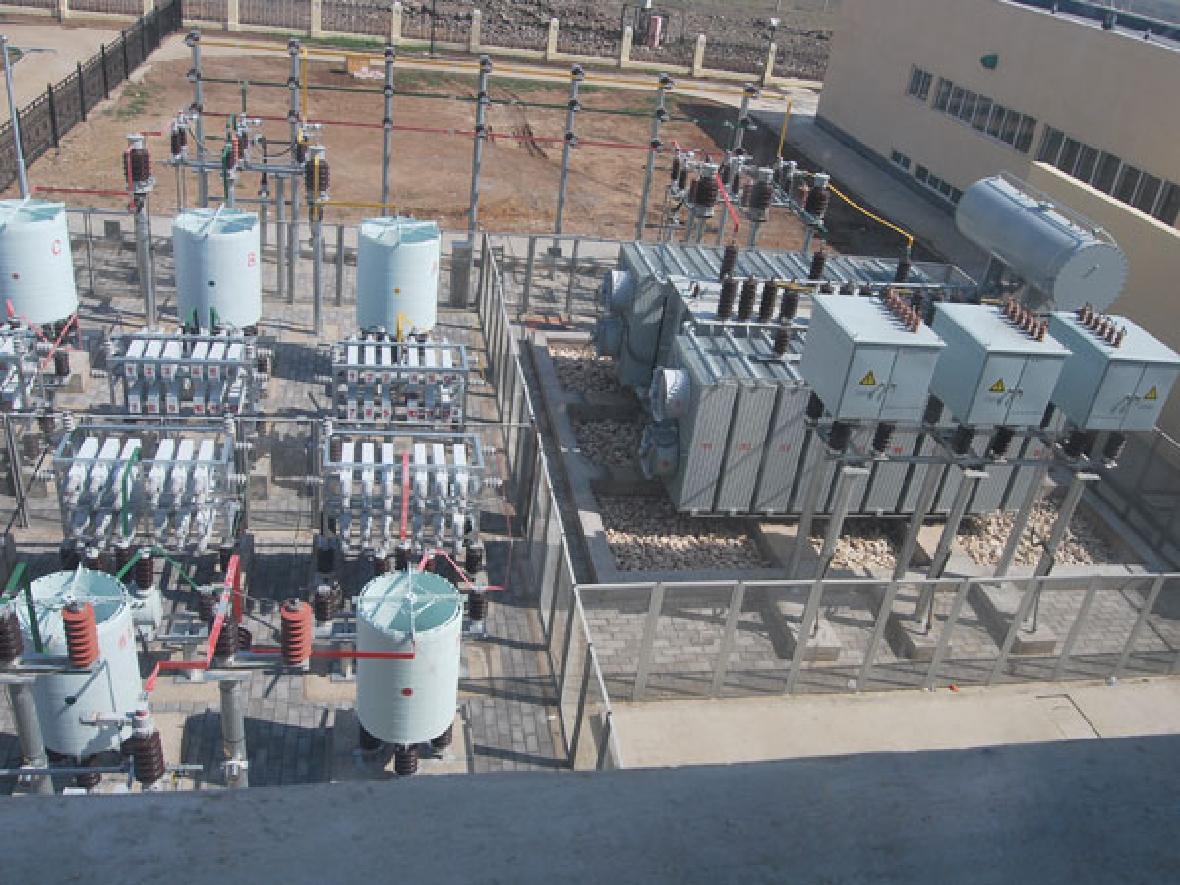MCR-type SVC
Product introduction
MCR (Magnetic-valve Controllable Reactor) type SVC adopts auto-coupling DC excitation and limit magnetic saturation working mode, which not only greatly reduces the harmonics generated, but also lower the active power loss and accelerate the response speed. By changing the trigger angle of the thyristor in the MCR excitation system, the magnetic flux saturation degree of the magnetically controlled reactor core can be changed and the reactive power output of the magnetically controlled reactor can be thus changed.
The MCR type SVC is extremely reliable, maintenance-free, and with a service life of no less than 20 years, which has been preferentially used in important systems such as electrified railway traction power supply networks. The device can work stably and reliably in any harsh power grid environment (for instance, voltage waveform distortion, large amplitude fluctuation, etc.), and it is simple to install (similar to ordinary transformers) and easy to debug, whose reactive power compensation capacity can be steplessly regulated to achieve the best compensation effect, being capable of directly operating on any voltage level power grid (6kV~500kV).
Product features
※ The control and monitoring system adopts a fully digital control system, which is fast in response speed with high reliability;
※ It has a friendly man-machine interface, which is convenient for the user to carry out operation and maintenance;
※ The remote operation of the SVC device can be realized through the monitoring system, which provides communication interfaces such as RS-485;
※ The device can be connected to the existing automation control system;
※ The device adopts a low temperature rise design, which is extremely reliable, and its design service life is more than 20 years with simple maintenance and low workload;
※ The working voltage of the excitation system is extremely low, only a few hundred volts, and the capacity is also very small, only about 1% of the MCR capacity;
※ The excitation system itself has a complete protection system, which can fully guarantee the safety of its operation;
※ The power electronic components in the excitation system adopt photoelectric triggering, and the main circuit and the control circuit have good isolation performance and strong anti-interference ability;
※ The device adopts a fully digital control system, a unique adaptive control algorithm, which is fast in response speed and high in reliability.
Application fields
① Long-distance power transmission
The power system is currently trending towards high-power, long-distance power transmission, which requires the transmission and distribution system to be more effective. Dynamic compensation can significantly improve the power transmission and distribution performance of the power system. Installing dynamic compensation at one or more appropriate locations on the power grid can achieve the following goals:
(1) Stabilizing the system voltage;
(2) Reducing power transmission loss;
(3) Increasing power transmission capacity;
(4) Buffering power oscillation;
(5) Improving the transient steady state limit.
② Coal mine
The hoist will have the following effects on the power grid during operation:
(1) Causing voltage drop and fluctuation of the power grid;
(2) Low power factor;
(3) The transmission device will generate harmful higher harmonics.
The dynamic compensation device can perfectly solve the above problems.
③ Wind farm booster station
The reactive power consumption of a wind farm changes with the change of wind speed. The dynamic reactive power compensation device can realize fast and dynamic adjustment of reactive power, stabilize the system voltage, improve the power factor, and completely solve the problem of reactive power reverse transmission in wind farms, which is an ideal choice to improve the power quality of the booster station of a wind farm.
④ Electric arc furnace
As a non-linear and irregular load connected to the power grid, the electric arc furnace will have a series of adverse effects on the power grid, the main ones are as follows :
(1) The generation of higher harmonics complicates the voltage distortion;
(2) Leading to serious three-phase imbalance in the power grid, resulting in negative sequence current;
(3) Causing serious voltage flicker;
(4) Low power factor.
⑤Rolling mill
The reactive impact load of the rolling mill will have the following effects on the power grid:
(1) Decreasing the power factor;
(2) Causing voltage fluctuations in the power grid, and in severe cases, making electrical equipment unable to work normally, reducing production efficiency;
(3) Harmful higher harmonics will be generated in the load transmission device, which will cause serious distortion of the grid voltage. Dynamic compensation can perfectly solve the above problems, keeping the bus voltage stable. Without harmonic interference, the power factor is close to 1.0.
⑥ Electric locomotive power supply
Although the electric locomotive transportation can protect the environment, it also can cause serious “pollution” to the power grid. This single-phase load causes serious three-phase unbalance and low power factor of the power grid, and generates negative sequence current. At present, the only way to solve this problem in the world is to install dynamic compensation systems at appropriate locations along the railway to improve the power factor.


